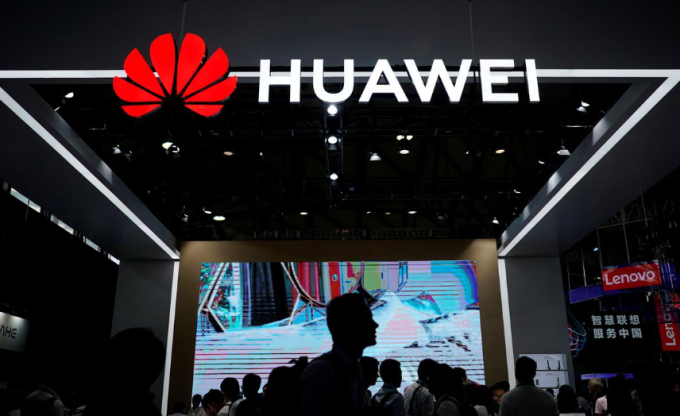Huawei's breakthrough in chips, using technology from two American companies.
Huawei and partner SMIC are said to use technology from two US suppliers to produce 7 nm chips for smartphones.
Citing sources familiar with supply chain issues, Bloomberg said SMIC used technology from Applied Materials and Lam Research to produce advanced 7 nm chips for Huawei. These two companies are both headquartered in California.
Some other sources also said that China cannot completely replace foreign components and equipment in the production of advanced semiconductor products. This country considers technological independence, including the semiconductor sector, a national priority. The fact that Huawei and SMIC produce their own chips currently receives great support from Beijing.
 Huawei's booth at a 2018 technology exhibition in China. Photo: Reuters
Huawei's booth at a 2018 technology exhibition in China. Photo: Reuters
Representatives of SMIC, Huawei, and Lam Research have not yet commented. Applied Materials, the US Department of Commerce's Bureau of Industry and Security - the agency responsible for implementing export controls - declined to comment.
Applied Materials was founded in 1967, specializing in providing equipment, services and software to produce semiconductor chips, flat screens for mobile devices and solar energy-related products. Lam Research, founded in 1980, is a supplier of wafer fabrication equipment and semiconductor-related services.
Both Lam Research and Applied Materials are considered to play an important role in the US semiconductor sector thanks to holding many technologies and products serving this field. Last year, Applied Materials was U.S criminal investigation for "circumventing the law" to sell chip manufacturing tools to SMIC without apply for a permit.
Last August, Huawei and SMIC were said to have produced their own Kirin 9000s - a 5G chip on the 7 nm process - to equip the Mate 60 series. This move received great attention, was hailed as a major step forward for semiconductors in China. According to statistics from a market research company Canalys market, in the last quarter of 2023, Huawei achieved impressive growth when shipping 7 million smartphone, an increase of 5,121% over the same period in 2022.
However, according to previous reports from Fortune, machines are used by SMIC to create chips for Huawei There are still foreign sources, such as DUV photolithography machines from ASML (Netherlands) or equipment from Lam Research and Applied Materials. Due to the inaccessibility of the advanced EUV ultraviolet lithography machine, SMIC Cho sought to use DUV to create 7 nm chips at an expensive cost and with lower output.
After Huawei released the Mate 60 series last year, the US opened an investigation. US Secretary of Commerce Gina Raimondo then announced that he would take "strong action" to ensure national security Legislation calls on the Joe Biden administration to completely cut off Huawei's access to American technology and SMIC. In addition, the US is pressing its allies the Netherlands, Germany, South Korea and Japan to strengthen their measures restrictions to prevent China from accessing semiconductor technology.
Since March 2021, the US government has almost stopped approving licenses for US companies such as KLA Corp, Lam Research, Applied Materials sells to SMIC. Last September, the US Department of Commerce announced the same documents to the three companies above, requesting not to export chip manufacturing equipment to Chinese factories China has the ability to manufacture products below 14 nm, unless there is a license.
Friday, March 8, 2024